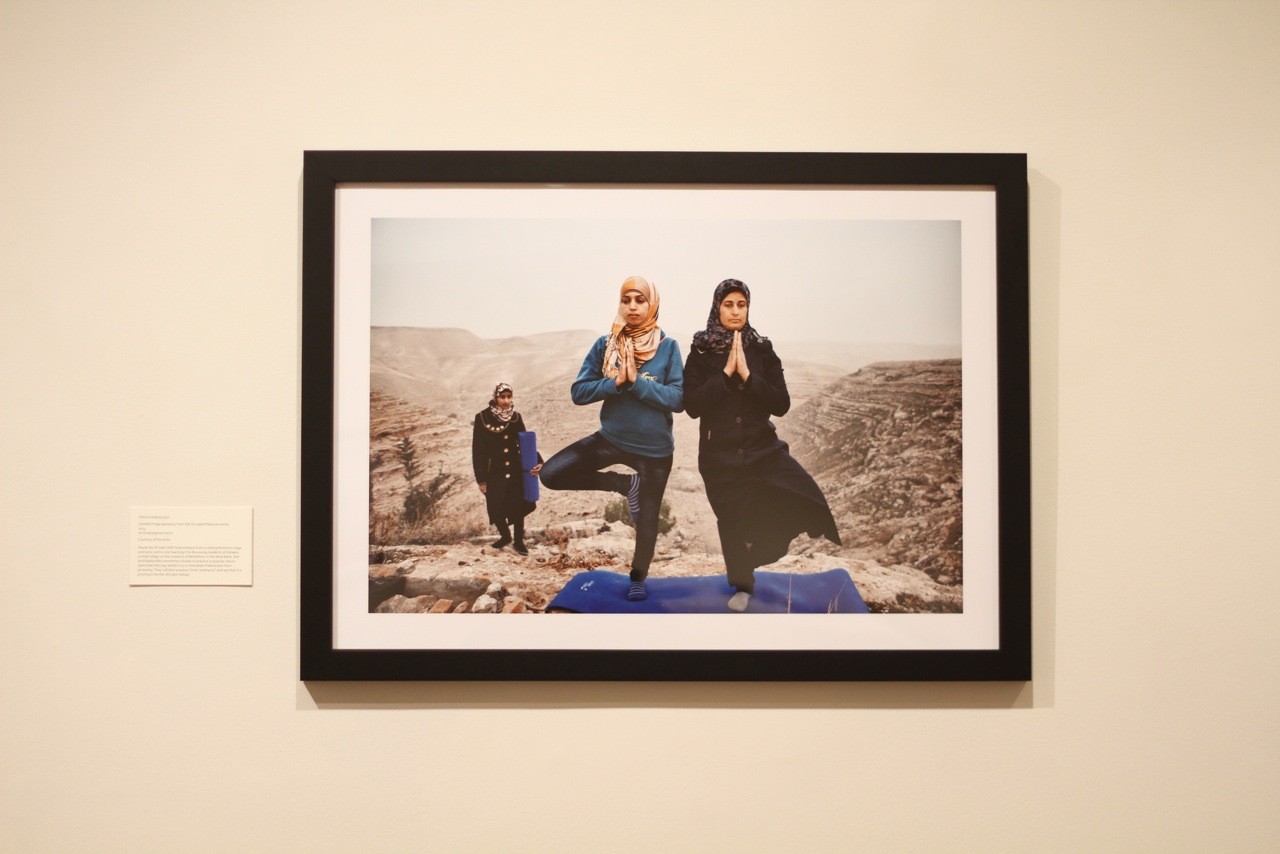In a continued effort to bring the Robert C. May Photography Endowment Lecture Series to a more prominent position at The University of Kentucky, The Art Museum will exhibit the work of award-winning Jordanian photographer, Tanya Habjouqa this winter. Alongside fellow statement show Same Difference, and the community pleasing Lexington Tattoo Project, Tanya Habjouqa: Recent Photographs will bring together two of her internationally acclaimed bodies of work for the first time.
Occupied Pleasures looks at the human spirit’s amazing ingenuity for entertainment in the glaring light of turmoil, while Tomorrow There Will Be Apricots examines the “muted testimony to loss” experienced by the women of Jordan who live in exile. The first installment of the 2015 Winter / Spring Lecture series, this collection of Habjouqa’s work demonstrates an admirable ability to document the occupied Palestinian condition from the perspective of humor, absurdity and finesse.
Born in Jordan and then raised and educated in Texas, Habjouqa is a founding member of the all female, all Middle Eastern photography collective Rawiya. Rawiya, meaning “She who tells a story” presents “an insider’s view of a region in flux balancing its contradictions while reflecting on social and political issues and stereotypes.” Habjouqa’s dissertation on narratives of resistance and suffering in Israel and Lebanon earned her an MA in political communications, and the academic qualifications to endorse such a socially progressive mission as Rawiya.
However, Habjouqa refuses to document the archetypes of journalistic conflict coverage and a population under duress, instead favoring elements of comedy and joy. For example, a grey, bullet-marked structure provides the background, but teens performing urban gymnastics serve as the subject in her photograph Gaza Parkour Team, Khan Younis Refugee Camp. In addition to these playful youth, Habjouqa’s subjects include teenage girls performing karaoke, grown bodybuilders, and whole families enjoying a meal on the beach. In another photograph, the border walls in the background appear less threatening because of what Habjouqa chose for the foreground: a man casually smoking a cigarette inside his car while a live sheep stares at him from his passenger seat in a comical moment of mutual respect, and sexual tension.
Habjouqa’s quest for these surreal moments does not occur coincidentally, but instead through a determined divergence from the “hyper narration” she saw put upon a place she now calls home. In an article for the New York Times in 2014, she says, “ I really felt like I needed to find another way to tell a story, not only just to make sense of it for myself, but to make sense of it for how I’m going to present it to my children as well, since this is going to be their home too.” This bold choice in documentary style photography has won Habjouqa a World Press Award for Occupied Pleasures and Time magazine selected a photograph from There will be Apricots as one of the top photographs of the year.
Habjouqa is the second contributing artist in the R.C. May Lecture Series, curated by Janie Welker. In the wake of the captivating portrait series Strangers and Relations by artist Laurel Nakadate, the increased emphasis on the photography endowment is both evident and welcomed. Having previously worked with Nakadate in 2012 at the Atlanta Contemporary Art Center, newly hired director Stuart Horodner would place the expansion of her Star Portraits project in the recently expanded main room of the Art Museum’s floor gallery. While the Habjouqa’s exhibition hangs in the more contemplative room located adjacent to this space, her work does not feel under-appreciated by comparison. Habjouqa and Nakadate’s photography achieve narrative in very different ways, but their distinctive approaches to portrait photography equally allow both female artists to reach extraordinary heights of self-reflection through their portraits of others..
Both Habjouqa’s work, and Nakadate’s Strangers and Relations use two modes of theatre to accomplish and ultimately showcase their processes. Both artists must manipulate the technical components of the camera (composition, lighting, etc.) in order to frame and light their subject. Nakadate’s use of the night sky and one flashlight creates an intrusive and eerily sharp concentration on her subjects, while Habjouqa prefers natural light for a more forthright approach to her subjects. Regardless, both artists excel in their ability to foster a human connection prior to the moment of the photograph so that their subjects understand and participate in the documentation.
In short, the Art Museum staff has brought the R.C. May Photography Series back into a brighter spotlight. The work of these two artists alone signals positive changes in the lecture series and the Art Museum at UK on the whole, including the forthcoming exhibition of 1950s and 60s street photographer Vivian Maier.
The R.C. May Photography Lecture Series will host Tanya Habjouqa for her culminating talk about her exhibition on February 27th at 4 p.m. in the Worsham Theatre. This event is presented in conjunction with the UK College of Arts and Sciences’ Year of the Middle East and is open to the public.
Tanya Habjouqa Review
On Display January 24th – April 12, 2015
The Art Museum at The University of Kentucky





